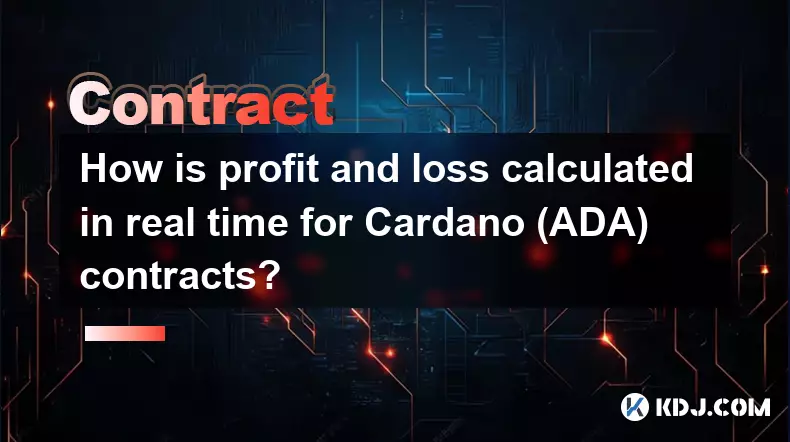-
 bitcoin
bitcoin $109667.069529 USD
-3.03% -
 ethereum
ethereum $3936.685804 USD
-4.07% -
 tether
tether $1.000493 USD
0.01% -
 xrp
xrp $2.771823 USD
-4.74% -
 bnb
bnb $957.805027 USD
-5.34% -
 solana
solana $196.735100 USD
-6.68% -
 usd-coin
usd-coin $0.999727 USD
-0.01% -
 dogecoin
dogecoin $0.227355 USD
-5.12% -
 tron
tron $0.335205 USD
-0.81% -
 cardano
cardano $0.779256 USD
-3.59% -
 ethena-usde
ethena-usde $0.999900 USD
-0.06% -
 hyperliquid
hyperliquid $42.492095 USD
-6.61% -
 chainlink
chainlink $20.501853 USD
-4.34% -
 avalanche
avalanche $28.952606 USD
-11.21% -
 stellar
stellar $0.356038 USD
-3.93%
How is the forced liquidation price for KuCoin contracts calculated?
KuCoin's forced liquidation occurs when margin falls below maintenance levels, using mark price to prevent manipulation and protect traders from excessive risk.
Sep 18, 2025 at 07:01 pm

Understanding Forced Liquidation on KuCoin Futures
Forced liquidation on KuCoin occurs when a trader’s margin balance falls below the maintenance margin required to sustain an open futures position. This mechanism protects both the exchange and other traders from excessive risk exposure due to undercollateralized positions. The forced liquidation price is determined based on several key variables: entry price, leverage, position size, maintenance margin rate, and funding fees if applicable.
Key Components in Calculating Liquidation Price
1. Initial Margin and Leverage Relationship1. The initial margin is derived by dividing the position value by the selected leverage. For example, a $10,000 position at 10x leverage requires $1,000 as initial margin.
- Higher leverage reduces the initial margin, making the position more sensitive to price fluctuations.
- KuCoin adjusts effective leverage dynamically depending on the user's risk tier, which impacts how much margin is allocated per contract.
2. Maintenance Margin Requirements
1. Each futures contract has a predefined maintenance margin rate set by KuCoin, typically ranging from 0.5% to 2% of the position value depending on the asset and leverage level.
- If the equity in the margin account drops to or below this threshold, the system triggers liquidation.
- Maintenance margin ensures that even during high volatility, there is a minimal buffer before automatic closure.
3. Directional Impact on Liquidation Price
1. For long positions, the liquidation price is below the entry price. As the market price decreases, unrealized losses accumulate, reducing available margin.
- For short positions, the liquidation price is above the entry price. Rising market prices increase losses for shorts, pushing them toward liquidation.
- The formula differs slightly between long and short because profit/loss calculations are direction-dependent.
Mathematical Formulation of Liquidation Price
The exact liquidation price depends on whether the position is long or short. While KuCoin does not publicly disclose its full algorithm, the general approach follows industry-standard models adjusted for their fee structure and risk parameters.
4. Long Position Liquidation Formula (Approximate)
1. Liquidation Price (Long) ≈ Entry Price × (1 - Initial Margin Rate + Maintenance Margin Rate)
- This assumes no additional fees or funding payments affecting the margin balance.
- High-leverage trades will have liquidation prices very close to the entry price due to thin margin buffers.
- Traders using isolated margin mode see liquidation calculated strictly against the allocated margin for that position.
5. Short Position Liquidation Formula (Approximate)
1. Liquidation Price (Short) ≈ Entry Price × (1 + Initial Margin Rate - Maintenance Margin Rate)
- Similar principles apply, but upside movement threatens short positions.
- Funding payments can accelerate liquidation if paid frequently and significantly erode margin.
- Cross-margin mode allows use of total wallet balance, delaying liquidation until overall equity falls too low.
Risk Mitigation Strategies Around Liquidation
Traders can take proactive steps to avoid being liquidated, especially in volatile markets where slippage and rapid price swings are common.
6. Adjusting Leverage and Adding Margin
1. Reducing leverage increases the distance between entry and liquidation price.
- Depositing additional margin manually widens the safety buffer.
- KuCoin provides real-time liquidation price indicators on the trading interface.
- Monitoring mark price versus last traded price helps anticipate liquidation triggers, as liquidations are based on mark price to prevent manipulation.
7. Utilizing Stop-Loss Orders Effectively
1. Placing stop-loss orders away from the liquidation price allows controlled exits.
- Avoid placing stops too close to current price to prevent premature triggering.
- Some traders set stop-losses near support/resistance zones rather than relying solely on auto-liquidation thresholds.
Frequently Asked Questions
What is the difference between mark price and last traded price in liquidation?KuCoin uses the mark price, derived from underlying index and funding rates, to determine liquidation. This prevents malicious price manipulation on the order book from triggering unfair liquidations.
Can I get negative balance after liquidation on KuCoin?No. KuCoin employs an insurance fund to cover most shortfall scenarios. In normal conditions, users cannot go into negative equity after liquidation.
Does funding rate affect my liquidation price?Yes. Regular funding payments deducted from your margin account reduce available equity over time, potentially bringing you closer to liquidation, especially in prolonged positions.
Why did my position liquidate even though the last price didn’t reach my liquidation level?Liquidation is based on the mark price, not the last traded price. If the mark price hits your liquidation threshold—even briefly—your position will be closed regardless of order book activity.
Disclaimer:info@kdj.com
The information provided is not trading advice. kdj.com does not assume any responsibility for any investments made based on the information provided in this article. Cryptocurrencies are highly volatile and it is highly recommended that you invest with caution after thorough research!
If you believe that the content used on this website infringes your copyright, please contact us immediately (info@kdj.com) and we will delete it promptly.
- XRP Price: October Rally on the Horizon After September Consolidation?
- 2025-09-26 16:25:13
- Bitcoin Price Wobbles: Investors Buy the Dip as Powell's Words Stir Uncertainty
- 2025-09-26 16:25:13
- Kaspa Price, Smart Contracts, and the 2026 Forecast: A New York Minute
- 2025-09-26 16:30:01
- Bitwise, Hyperliquid ETF, and HYPE Token: What's the Deal?
- 2025-09-26 16:45:14
- B HODL, Bitcoin, and Treasury Purchases: The New Institutional Playbook
- 2025-09-26 17:05:15
- Cloudflare, Stablecoins, and AI Agents: A New Era of Automated Finance
- 2025-09-26 16:45:14
Related knowledge

How do I enable the "scalping-only" mode for Cardano (ADA) contracts?
Sep 24,2025 at 03:19am
Understanding Scalping Strategies in Crypto Derivatives1. Scalping in cryptocurrency trading refers to executing multiple short-term trades within min...

What is the maximum position limit for Cardano (ADA) contracts?
Sep 23,2025 at 11:00pm
Understanding ADA Futures and Derivatives Market Structure1. Cardano (ADA) futures contracts are offered by several major cryptocurrency derivatives e...

What is the maker fee for Cardano (ADA) contracts?
Sep 26,2025 at 09:01am
Understanding Maker Fees in Cardano (ADA) Contracts1. The concept of maker fees applies broadly across decentralized exchanges and smart contract plat...

How can I view open interest in Cardano (ADA) contracts?
Sep 24,2025 at 07:36am
Understanding Open Interest in Cardano Derivatives1. Open interest refers to the total number of outstanding derivative contracts, such as futures or ...

What is the function of the insurance fund in Cardano (ADA) contracts?
Sep 24,2025 at 02:18am
Understanding the Role of Insurance Funds in Cardano Smart Contracts1. The insurance fund within Cardano's ecosystem is not a native feature directly ...

How is profit and loss calculated in real time for Cardano (ADA) contracts?
Sep 26,2025 at 04:18pm
Understanding Real-Time Profit and Loss in Cardano (ADA) Contracts1. Real-time profit and loss (P&L) calculations for Cardano-based smart contracts re...

How do I enable the "scalping-only" mode for Cardano (ADA) contracts?
Sep 24,2025 at 03:19am
Understanding Scalping Strategies in Crypto Derivatives1. Scalping in cryptocurrency trading refers to executing multiple short-term trades within min...

What is the maximum position limit for Cardano (ADA) contracts?
Sep 23,2025 at 11:00pm
Understanding ADA Futures and Derivatives Market Structure1. Cardano (ADA) futures contracts are offered by several major cryptocurrency derivatives e...

What is the maker fee for Cardano (ADA) contracts?
Sep 26,2025 at 09:01am
Understanding Maker Fees in Cardano (ADA) Contracts1. The concept of maker fees applies broadly across decentralized exchanges and smart contract plat...

How can I view open interest in Cardano (ADA) contracts?
Sep 24,2025 at 07:36am
Understanding Open Interest in Cardano Derivatives1. Open interest refers to the total number of outstanding derivative contracts, such as futures or ...

What is the function of the insurance fund in Cardano (ADA) contracts?
Sep 24,2025 at 02:18am
Understanding the Role of Insurance Funds in Cardano Smart Contracts1. The insurance fund within Cardano's ecosystem is not a native feature directly ...

How is profit and loss calculated in real time for Cardano (ADA) contracts?
Sep 26,2025 at 04:18pm
Understanding Real-Time Profit and Loss in Cardano (ADA) Contracts1. Real-time profit and loss (P&L) calculations for Cardano-based smart contracts re...
See all articles










































































